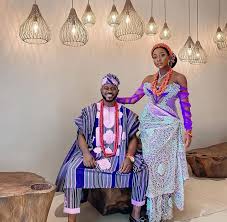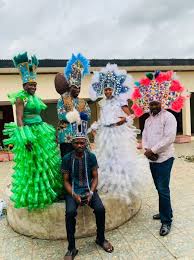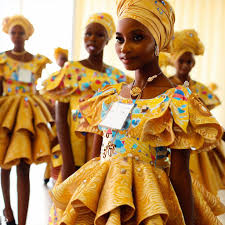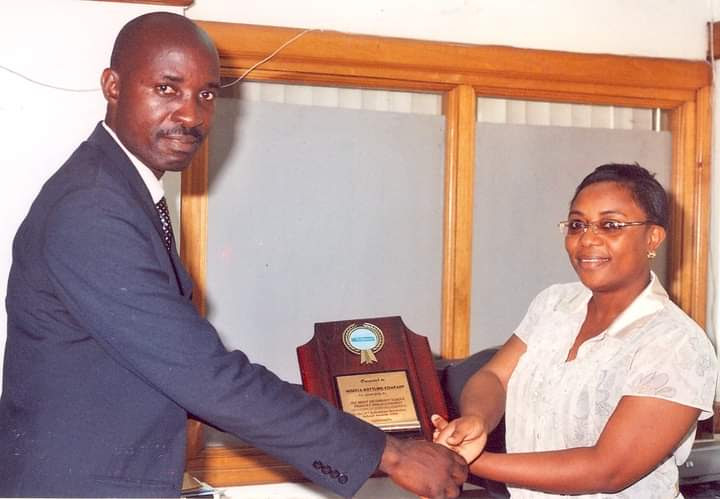![]()
If you’ve landed on this article page, you’re probably searching for a
good business idea—an idea that’s light on the pocket but heavy on
returns, promising both a fulfilling journey and potential profit.
|
How to Start a Costume Design Business
A costume designer designs, sources, and creates the clothing
and accessories worn by the characters in a film, series, or
theatrical production. Their main job is to telegraph who a
character is via what they′re wearing. A costume is one of the
first things viewers see, and it gives audiences an idea of the
story that′s about to unfold.
A costume designer’s day is a long, demanding one. During
preproduction, they read the script, take notes, and analyze the
plot, tone, and setting of the project. They also coordinate
daily responsibilities, schedules, and deadlines for the
production team, and are hands-on during fittings.
To achieve this, costume designers—who head the wardrobe
department and are responsible for staffing and managing the
team—must tap into their inner psychologist, sociologist,
researcher, historian, and actor. Juggling these roles helps
them to design, create, compile, and fit the most appropriate
outfits and accessories to each character to serve the needs of
the narrative and the director’s vision.
Although both positions involve designing clothing, fashion
designers create items that are sold to and worn by the general
public. Costume designers, on the other hand, specialize in
crafting clothing for film, TV, and theatrical productions.
Analysis: Costume designers analyze the script, talk to the
director, and put together visual references before designing
and assembling looks.
Designing: The designer’s research and prep work often
correlates with the creation of sketches, fabric samples,
digital renderings, and mood boards that show the types of
clothing, materials, and patterns they think fit the project.
Planning: The designer then sketches or makes digital renderings
for the costume plot, which lists characters and tracks their
costumes, scene-by-scene. The sketches and blueprints are
presented to the director and other stakeholders, such as the
director of photography, the production designer, and members of
the hair and makeup departments. Sometimes adjustments need to
be made to accommodate a budget restriction, a specific actor,
or stunt rigging.
Production: Once their ideas get the go-ahead from the
production team and director, it’s time for a costume designer
to track down and/or create every shirt, dress, necklace, and
hat worn by every single actor—all while ensuring the costumes
can help the actors better understand their characters. “An
actor walks into a fitting, and you are there to help them find
the character,
Education: Costume designers generally come to the position from
varying educational backgrounds. Many enter from other fields,
including fashion, theatrical design, acting, and graphic
design, there is
“no sign-up sheet; there’s no [bulleted] list; there’s no single
route that any individual designer takes to get where they are….
Every single person comes into it from a different point.”
Creative: Costume designers should be skilled in drawing,
possess strong creative instincts, be detail-oriented, and have
a strong grasp of color and design.
A costume designer’s job is to visually telegraph who a
character is by what they’re wearing.
Good at research: Dedication to researching history, filmmaking,
photography, literature, architecture, writing, character
development, and story structure allows costume designers to
build extensive knowledge of period costumes and accessories.
A costume design portfolio that showcases previous work is key
to booking jobs. No matter the position, a portfolio submission
will be required, so it’s wise to have one ready to go. Include
fully built wardrobes, fabric samples, sketches, mood boards,
photographs, and videos. Be sure to include samples from every
stage of the process, from initial sketches to images of the
finished product, to illustrate how you work. If possible,
include designs across mediums, genres, and time periods to
showcase your versatility, imagination, creativity, and
knowledge.
You can get our practical training guide, If you’ve ever aspired
to become a Costume designer and immerse yourself in the art of
filmmaking, this comprehensive guide will illuminate the path to
achieving your
dreams. We’ll explore the multifaceted world of Film making,
dissect their roles and responsibilities, and provide insights
into the diverse career opportunities available in this dynamic
field. From the fundamental requirements to the creative skills
that set designers apart, we’ll navigate the exciting journey of
how to become a designer and embark on a career filled with
artistic expression, storytelling prowess, and cinematic magic.
|







